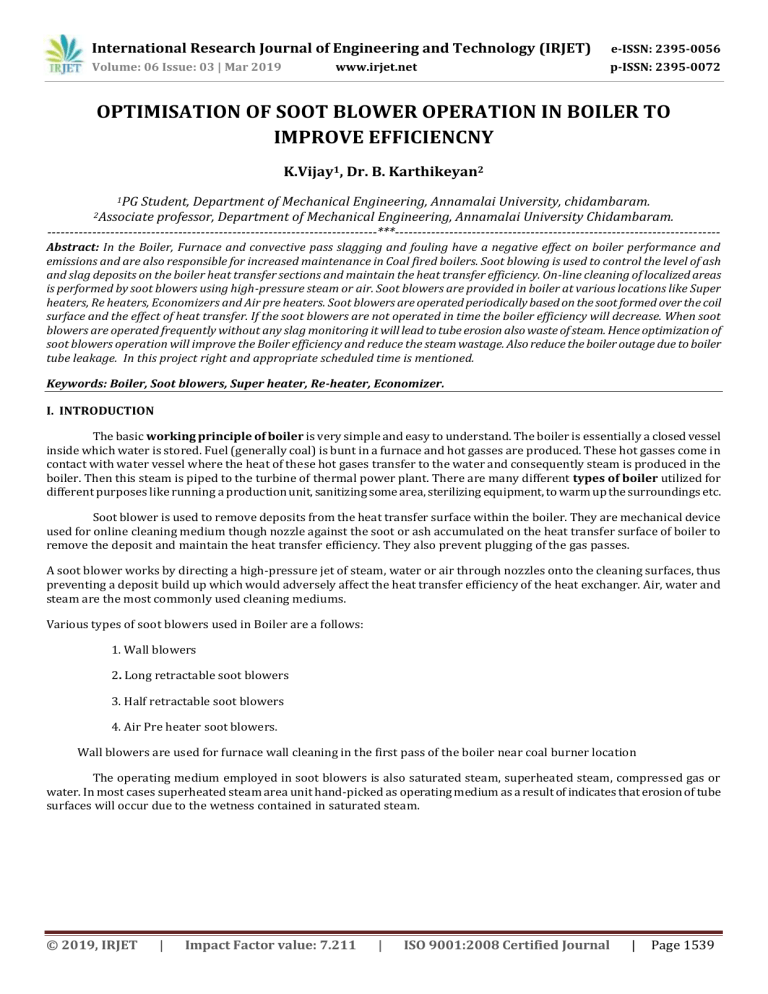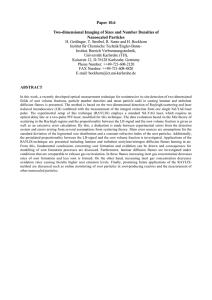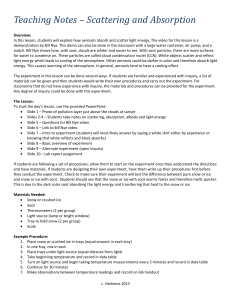IRJET-Optimisation of Soot Blower Operation in Boiler to Improve Efficiency

International Research Journal of Engineering and Technology (IRJET)
e-ISSN: 2395-0056
Volume: 06 Issue: 03 | Mar 2019 www.irjet.net p-ISSN: 2395-0072
OPTIMISATION OF SOOT BLOWER OPERATION IN BOILER TO
IMPROVE EFFICIENCNY
K.Vijay
1 , Dr. B. Karthikeyan 2
1
PG Student, Department of Mechanical Engineering, Annamalai University, chidambaram.
2
Associate professor, Department of Mechanical Engineering, Annamalai University Chidambaram.
-------------------------------------------------------------------------***------------------------------------------------------------------------
Abstract: In the Boiler, Furnace and convective pass slagging and fouling have a negative effect on boiler performance and emissions and are also responsible for increased maintenance in Coal fired boilers. Soot blowing is used to control the level of ash and slag deposits on the boiler heat transfer sections and maintain the heat transfer efficiency. On-line cleaning of localized areas is performed by soot blowers using high-pressure steam or air. Soot blowers are provided in boiler at various locations like Super heaters, Re heaters, Economizers and Air pre heaters. Soot blowers are operated periodically based on the soot formed over the coil surface and the effect of heat transfer. If the soot blowers are not operated in time the boiler efficiency will decrease. When soot blowers are operated frequently without any slag monitoring it will lead to tube erosion also waste of steam. Hence optimization of soot blowers operation will improve the Boiler efficiency and reduce the steam wastage. Also reduce the boiler outage due to boiler tube leakage. In this project right and appropriate scheduled time is mentioned.
Keywords: Boiler, Soot blowers, Super heater, Re-heater, Economizer.
I. INTRODUCTION
The basic working principle of boiler is very simple and easy to understand. The boiler is essentially a closed vessel inside which water is stored. Fuel (generally coal) is bunt in a furnace and hot gasses are produced. These hot gasses come in contact with water vessel where the heat of these hot gases transfer to the water and consequently steam is produced in the boiler. Then this steam is piped to the turbine of thermal power plant. There are many different types of boiler utilized for different purposes like running a production unit, sanitizing some area, sterilizing equipment, to warm up the surroundings etc.
Soot blower is used to remove deposits from the heat transfer surface within the boiler. They are mechanical device used for online cleaning medium though nozzle against the soot or ash accumulated on the heat transfer surface of boiler to remove the deposit and maintain the heat transfer efficiency. They also prevent plugging of the gas passes.
A soot blower works by directing a high-pressure jet of steam, water or air through nozzles onto the cleaning surfaces, thus preventing a deposit build up which would adversely affect the heat transfer efficiency of the heat exchanger. Air, water and steam are the most commonly used cleaning mediums.
Various types of soot blowers used in Boiler are a follows:
1. Wall blowers
2 . Long retractable soot blowers
3. Half retractable soot blowers
4. Air Pre heater soot blowers.
Wall blowers are used for furnace wall cleaning in the first pass of the boiler near coal burner location
The operating medium employed in soot blowers is also saturated steam, superheated steam, compressed gas or water. In most cases superheated steam area unit hand-picked as operating medium as a result of indicates that erosion of tube surfaces will occur due to the wetness contained in saturated steam.
© 2019, IRJET | Impact Factor value: 7.211 | ISO 9001:2008 Certified Journal | Page 1539
International Research Journal of Engineering and Technology (IRJET) e-ISSN: 2395-0056
Volume: 06 Issue: 03 | Mar 2019 www.irjet.net p-ISSN: 2395-0072
Fig-1: soot blower
II OBJECTIVE
This work consists of soot blower operation. The objectives are
To make soot blower clean the soot deposition on the boiler tube more effectively and increase the overall working efficiency of the boiler.
To reduce damage on furnace wall tubes due to excessive blowing.
To reduce steam wastage.
In this project right and appropriate scheduled time is mentioned.
III. LITERATURE REVIEW
Shivaraj Kumar (2013) in this paper, problems associated with soot or slag deposition on the furnace walls, which reduces the heat flux. In order to blow off the soot on furnace walls efficiently and economically, a new system called Intellectual Soot
Blowing is invented. The project includes comparative analysis of THR, UHR &Cycle efficiency prior and after installation of
SWBS where there is a drastic change in investment for slag removal in the plant which in turn boots the cycle efficiency, which is a needed parameter. The analysis has also proved that the cycle efficiency has been driven up to a considerable extent when compared to the conventional value.
Bharathi.et.al (2016) Boiler is one of the main equipment in thermal power plant. The Soot, ash on the surface of boiler tubes is still a great concern and affecting the efficiency of the coal fired boiler. At present soot blowers are operated manually in every shift. This project presents one of the embedded based industrial automation techniques for efficient operation of the soot blowers in both auto and manual mode, which also adopts the stack based temperature controlling of soot blower for optimization of soot blower control to increase the boiler efficiency. An automation technique is simulated in real time using proteus.
Chayalakshmi c.l.et.al (2014) Boiler is a power house of any process industry. Soot and scale formation in boilers is still a great concern for increasing the efficiency of the boiler. At present, soot blowers are operated manually once in a shift. This paper presents one of the embedded based industrial automation technique for efficient operation of soot blowers. An automation technique is designed and implemented in real time using ARM7 platform. Stack temperature is used as the criteria for controlling the soot blower. Embedded C language is used for implementing the automatic control algorithm. The performance of the designed system is tested in the laboratory.
IV SOOT BLOWER WORKING PROCESS
Soot blower is a device that directs a stream or a number of streams of cleaning medium at the ash deposits so that they get dislodged by the impact of the jets. Called as the peak impact pressure (PIP), it is the energy at a certain distance from the nozzle of the SB. The PIP depends on the
Nozzle size and configuration
Fluid pressure and temperature
Soot blowers consist of four parts:
1. Nozzles for blowing the fluid
© 2019, IRJET | Impact Factor value: 7.211 | ISO 9001:2008 Certified Journal | Page 1540
International Research Journal of Engineering and Technology (IRJET) e-ISSN: 2395-0056
Volume: 06 Issue: 03 | Mar 2019 www.irjet.net p-ISSN: 2395-0072
2. Element (or lance in longer SBs) for conveying the fluid
3. Drive system for rotating or advancing/retracting the element
4. Control system
Steam for soot blowing should be dry under all conditions to prevent impingement of heavy water particles that can render serious damage by way of erosion or puncture. Saturated steam helps to deliver a high PIP. Ideally, there should be 10-
20°C of superheat. Higher superheat is also employed. The steam gets lighter but the jet velocity increases, making the PIP higher and resulting in a better cleaning.
The pressure of steam is first reduced in the poppet valve placed just ahead of the lance to restrict the blowing or nozzle pressure to <5-25 barg (75-350 psig), depending on the actual configuration. Several stages of pressure reduction take place before the steam emerges at the prevailing draft inside the boiler setting. Steam from the nozzles is at supersonic velocity.
A poppet valve has an adjusting nut for varying the blowing pressure, and each SB is set for the best result depending on the type of ash deposits. Tenacious deposits need a higher pressure. For fluffy deposits, the pressure should be lowered to prevent tube damage. SBs are practically ineffective on any flowing low-viscosity slags, such as those found with oil firing, as there are no deposits to blow away. The drive motors can be either electric or pneumatic, with the latter used in refineries and similar areas with stringent requirements of fire protection.
Before starting, the blower is in rest at its rear end position. The tube element is completely drawn off from the boiler and the nozzle will be outside the vertical tube walls of the boiler. When the motor is started, the tube element starts moving with rotational movement. At the same time, the carriage free up the rear limit switch as it moves forward on two track beam rails and projects the lance tube into the flue gas flow. Just when the nozzles allow inside the furnace gas flow path the trip pin on the carriage will be striking a cam and actuating the steam valve to open. Steam gets admitted through the nozzles and cleans the tubes around boilers.
The carriage continuously concentrated, until the nozzles reach the front- end position. The limit switch located at the front- end position and reverses the position of rotation of the motor. Due to the reverse rotation the blower now starts retracting.
Before the nozzles reach the boiler wall, the blower valve closes and cut off the blowing. The rear-end limit switch cuts of the supply to the motor as soon as the lance tube comes to the original position.
V. THERMAL POWER STATION-I EXPANSION
The soot blowers system is capable to provide superheated steam to the boiler soot blowers for heat exchanging surface cleaning to the regenerative air heaters soot blowers and to ventilation mills Re suction duct soot blowers for cleaning duty.
Steam is taken from super heater SH
2
coil outlet header with a pressure control station where the pressure is reduced to 24 bar. The temperature of the super heated steam is approximate 400 0 C. Quantity of steam consumed per blower per operation is 750Kg.
Performance of operation of is five minutes. Total time consumed for one cycle is one hundred twenty minutes. Every soot blower can cover 3 meter diameter and 50% of the furnace width. The soot blower includes a tube element with 2-venturi nozzles through that steam is blown on the tube bundles round the specific blower. The tube element Will be getting into the flue gas flow, with a rotating movement and obtain back to its original position.
Fig-2: soot blower operation
© 2019, IRJET | Impact Factor value: 7.211 | ISO 9001:2008 Certified Journal | Page 1541
International Research Journal of Engineering and Technology (IRJET) e-ISSN: 2395-0056
Volume: 06 Issue: 03 | Mar 2019 www.irjet.net p-ISSN: 2395-0072
During this, the nozzles movements in a helical direction. The two nozzles opposed each other and the spreading blowing jets ensure complete cleaning coverage during the whole movement of the tubes.
VI. TEMPERATURE FOR ENTIRE COILS:
Table-1: Temperature Entire coil Reading
Entire Coils
DAY 1
10.07 AM
DAY 1
03.13 PM
Before Soot Blower After Soot Blower
Furnace Temperature Left
[ ℃ ]
846
Downstream SH1 FG
Temperature Left [ ℃ ]
Downstream SH3 FG
Temperature Left [ ℃ ]
Downstream RH2 FG
Temperature Left [ ℃ ]
Downstream SH2 FG
Temperature Left [ ℃ ]
810
706
593
480
840
781
657
551
457
Downstream RH1 FG
Temperature Left [ ℃ ]
FG Temperature
Economizer 1st Left
[ ℃ ]
399
351
FG Temperature
Economizer 1st outlet Left
[ ℃ ]
323
RAPH Outlet Temperature
[ ℃ ]
187
U2 Generated Load
[kJ]
210
FG Temperature to Chimney
[ ℃ ]
168.50
RAPH1 Inlet Air
Temperature
[ ℃ ]
34.70
RH Spray Water Flow
[ton/hr]
17.80
382
337
313
179.80
211.50
162.80
34.80
17.94
Table-2: Fuel sample analysis
Constituent
Carbon
Hydrogen
Oxygen
Sulphur
Nitrogen
Moisture
Ash
GCV of Fuel
NCV of Fuel
Units
%
%
%
%
%
%
% kJ/kg kJ/kg
Values
31.14
3.326
9.38
0.7
1.642
53.60
4.77
11217.3
9468.3
© 2019, IRJET | Impact Factor value: 7.211 | ISO 9001:2008 Certified Journal | Page 1542
International Research Journal of Engineering and Technology (IRJET) e-ISSN: 2395-0056
Volume: 06 Issue: 03 | Mar 2019 www.irjet.net p-ISSN: 2395-0072
VII. EFFICIENCY OF BOILER
Sl.No
1
2
3
4
5
Date
08.10.2018
08.10.2018
09.10.2018
10.10.2018
10.10.2018
6
7
8
9
11.10.2018
12.10.2018
13.10.2018
15.10.2018
10 15.10.2018
11 16.10.2018
12 17.10.2018
13 18.10.2018
14 22.10.2018
15 22.10.2018
Table-3: Efficiency of boiler
Period of Soot Blower Efficiency (%)
Before 74.1
After
After
After
1st Row Soot Blower
Operation
74.44
74.22
73.8
74.38
After
After
After
Before
74.35
74.29
74.26
73.62
After
After
After
After
Before
After
74.46
74.15
74.07
73.90
73.58
74.42
GRAPH:
VIII CONCULATION:
We have monitored the efficiency of the soot blowers in TPS-I expansion Boilers for the period of two weeks before and after operating soot blowers. It is observed that efficiency of soot blowers operation is more in SH
1
, SH
3 and RH
2 coil area.
Hence, we have operated the first row of soot blowers which covers SH three days.
1 and SH
3
coils, to check its efficiency further with a interval of three days and found that efficiency improvement is appreciable. Hence this soot blowers can be operated once in
In addition to that while operating first row soot blowers, Re-heaters De Super heating spray water quantity has come down considerably, it will result in overall improvement of the thermal cycle.
ACKNOWLEDGEMENTS
I also express my sincere thanks to Dr.C.G.SARAVANAN M.E., Ph. D., Head of the Department, Dept. of Mechanical
Engineering, Annamalai University for giving me the opportunity to carry out the project in NLC India Limited.
© 2019, IRJET | Impact Factor value: 7.211 | ISO 9001:2008 Certified Journal | Page 1543
International Research Journal of Engineering and Technology (IRJET) e-ISSN: 2395-0056
Volume: 06 Issue: 03 | Mar 2019 www.irjet.net p-ISSN: 2395-0072
I will be failing in my duties if I do not express my deep sense of gratitude towards my guide Dr. B. KARTHIKEYAN
M.E., Ph.D., Associate Professor, Dept. of Mechanical Engineering, Annamalai university for his guidance to carry out this project under his effective supervision, encouragement and co-operation.
REFERENCE
1) Chayalakshmi C.L, D.S. Jangamshetti, Savita Sonoli, (2013) “Design and Development of an ARM platform based
Embedded System for Measurement of Boiler Efficiency,” IEEE Symposium on Industrial Electronics and Applications,
Malaysia, ISBN: 978-1-4799-1124-0.
2) “Fundamentals of soot blowers” by A.K. Varshneya. ( Gulf Professional Publishing )
3) Atmega et.(2016) Optimization of soot blower control.
4) A Literature Review on Failure of Long Retractable Soot Blower. Sivarai
5) Analysis of Clinker Formation Region & Soot Blower Optimization Using CFD Analysis by Bhatt Samik.
6) K. Gouri Shankar, (2008) “Control of Boiler Operation using PLC-SCADA,” International Multi Conference of Engineers and Computer Scientists.
© 2019, IRJET | Impact Factor value: 7.211 | ISO 9001:2008 Certified Journal | Page 1544



